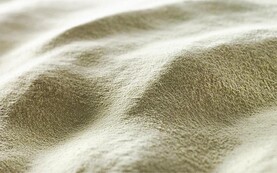For many in the Irish dairy industry, the Global Dairy Trade (GDT) auction is seen as an Asian clearing house for commodity products.
Obviously, this serves an important function, as the Asian market is key for the dairy industry, no matter where in the world a processor is.
But, as a clearing house for base products such as skim milk powder in New Zealand, the price signals from the auction has traditionally had little correlation with the price farmers in Ireland would get for their milk.
In Figure 1, we can see that the GDT index peaked in March 2022, many months before the peak in Irish milk prices.
The index opened this year just ahead of 1,000 points and seems set to close it out at around the same level, again not something any Irish dairy farmer experienced.
Ambitions
But GDT has ambitions to widen both its scope of products and number of traders.
In recent weeks, it announced changes to rules to entice new sellers on to the platform. The company said the changes were to “accommodate the diverse range of new sellers expected to join GDT in the coming years”.
Currently, there are eight sellers on the GDT platform, with New Zealand’s Fonterra by far being the dominant supplier.
The expansion of the platform can be seen in the fact that three of those eight sellers joined this year. Those three - US-based Dairgold and Valley Milk and Belgian Solarec - provide an increasing international side to the auctions.
Range of products
They also provide a wider range of products. Solarec, for example, sold mozzarella for February delivery to Europe at the auction held on 5 December. Arla Foods and Arla Food Ingredients are the other European dairy companies on the platform.
As well as the fortnightly main GDT auction, there is also a small event held in weeks without an auction, called GDT pulse, which sells a narrow range of products in order to gain some price discovery.
GDT’s ambitions to get more sellers on its platform, selling a wider range of products and with more frequent auction events means that it could be set to become the global clearing house for dairy commodities, rather than just another outlet for New Zealand milk powder.






 This is a subscriber-only article
This is a subscriber-only article











SHARING OPTIONS: